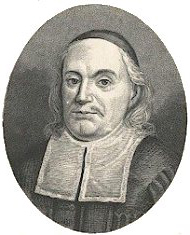On Day 10 I had an opportunity to visit the Pergamon Museum. If you like to see "big things" this museum is for you. The main item that I was interested in was The Ishtar Gate. This was one of the main gates leading into the ancient city of Babylon. It is an impressive structure that was built to both impress, and scare the heck out of the visitors to the city. Let the reader understand that visitors weren't always willingly visiting the city. Think of the Israelites who were attacked by the Babylonians and taken into exile in Babylon. Daniel 1:1-7
This model of the giant gateway shows the processional way that lead up to the gates. Sodiers with their weapons would have glared down from above at those walking into the city for the first time.
Along the processional way were pictures of lions built in relief coming out of the ceramic bricks to "welcome" you. Everything about this entrance is meant to be intimidating. Can you imagine what it was like for Daniel and the Israelites to enter this foreign, and powerful city for the first time?
Another impressive large structure in the museum is the Pergamon Altar. It is a monumental construction built during the reign of King Eumenes II in the first half of the 2nd century BC in the ancient city of Pergamon in Asia Minor. The structure is an impressive 35.64 meters wide and 33.4 meters deep; the front stairway alone is almost 20 meters wide. The base is decorated with a frieze in high relief showing the battle between the Giants and the Olympian gods. This is only about one third of the original structure.
Not far from the Pergamon Museum was another building I was hoping to see; The Church of St. Nicholas. This church actually pre-dates the city of Berlin and is therefore the oldest church in the city.
What makes this church interesting to Lutherans, however, is that one of it's Pastors was Paul Gerhardt who was probably the most prolific hymn writer of the Lutheran Church. If have have sung the timeless hymn "O Sacred Head Now Wounded," you have Paul Gerhardt to thank.
While the building is no longer used by an active congregation, it is kept alive as a museum and it plays host to a number on concerts throughout the year.
I then went across the city hoping to visit the Kaiser Wilhelm Memorial Church. It is a church that was bombed during the war in 1943, and the people of Berlin decided not to demolish it or restore it but to leave it as reminder of the devastation of WW2. This is how it is supposed to look, however when I arrived it was covered in scaffolding and tarps. Apparently bombed out structure wasn't so safe and they are in the process of preventing it from collapsing on tourists. So much for that.
Years ago they did build a new church for the congregation to worship in, and from the outside it is very boring and unimpressive.
The inside, however, redeems the building. That statue of Jesus hanging there is huge and if He ever falls on the presiding minister, well...I guess we would have to say that it was God's will.On Day 11 I will check out two very unique Museums.








